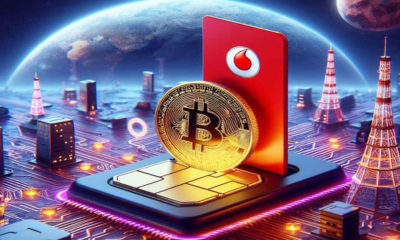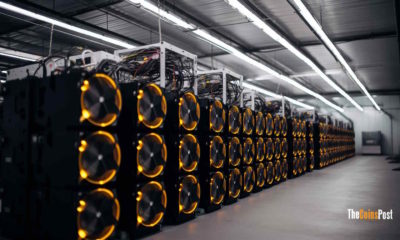Bitcoin
Ordinals: NFTs on Bitcoin

Non-fungible tokens (NFTs) have gained immense popularity on blockchains like Ethereum, Solana, and BNB Smart Chain. However, the Ordinals project aims to extend the concept of NFTs to the Bitcoin blockchain. While Bitcoin’s decentralized nature and security have historically made it difficult to implement changes to its code, the Ordinals team believes that Bitcoin NFTs have a place in the future of Web3. In this article, we will delve into the concept of Bitcoin Ordinals and explore its potential impact.
Contents
Understanding Bitcoin Ordinals
The Ordinals protocol introduces a system for numbering satoshis, the smallest unit of Bitcoin, and tracking them across transactions. By attaching extra data to each satoshi through a process called “inscription,” Ordinals enables the uniqueness of individual satoshis. This means that each satoshi can be treated as a distinct digital asset, similar to an NFT.
Unlike traditional NFTs, which rely on smart contracts and may have the assets they represent hosted elsewhere, Ordinals inscriptions are directly embedded onto individual satoshis within the Bitcoin blockchain. This approach ensures that Ordinals reside fully on the Bitcoin blockchain itself, inheriting its simplicity, immutability, security, and durability.
Ordinal Theory and Inscriptions
Ordinal Theory, in the context of Bitcoin, refers to the proposed methodology for identifying and tracking each satoshi throughout its lifecycle. This theory enables the inscription of digital assets, similar to NFTs, on individual satoshis within the Bitcoin network. The Taproot upgrade, implemented on November 14, 2021, made it possible to create ordinal inscriptions without the need for a separate sidechain or token.
Ordinal inscriptions come with a ranking system based on the rarity of satoshis. These rankings include:
- Common: Any satoshi other than the first satoshi of its block (2.1 quadrillion total supply).
- Uncommon: The first satoshi of each block (6,929,999 total supply).
- Rare: The first satoshi of each difficulty adjustment period (3437 total supply).
- Epic: The first satoshi after each halving (32 total supply).
- Legendary: The first satoshi of each cycle* (5 total supply).
- Mythic: The first satoshi of the genesis block (1 total supply).
Pros and Cons of Ordinals:
Ordinals bring forth new possibilities for the Bitcoin network beyond simple value transfers. However, this protocol has sparked controversy within the Bitcoin community. Some argue that Bitcoin’s simplicity should be preserved, focusing solely on storing and transferring value. Others believe that Bitcoin should evolve to include new features and use cases, with Ordinals being one such innovation.
One concern raised by the introduction of inscribed satoshis is the competition for block space, which can increase network fees. While some view this as a positive incentive for miners to secure the blockchain, others express reservations. As block rewards diminish over time, network fees will become the primary incentive for miners. The Bitcoin community remains divided on the implications of Ordinals, but the project undeniably brings innovation to the Bitcoin space.
Wallets for Bitcoin Ordinals
Previously, there was a lack of designated wallet interfaces for storing and transferring Bitcoin Ordinals Inscriptions. However, the situation has begun to change with the introduction of three wallets that now support Bitcoin Ordinals functionality: Ordinals Wallet, Xverse, and Hiro Wallet.
While the current functionality of these wallets may be limited, their developers have indicated that more features are on the way. These wallets serve as convenient options for users who prefer not to go through the process of setting up a separate Bitcoin wallet. Alternatively, if you seek more customization options, you can set up a Bitcoin wallet like Sparrow, which allows for Ordinal inscriptions.
To make compatible with Ordinals, check this detailed tutorial that provides step-by-step instructions. It’s important to note that this wallet is specifically for receiving Ordinals, and you should avoid sending BTC from this wallet to prevent accidental loss of both BTC and Ordinals.
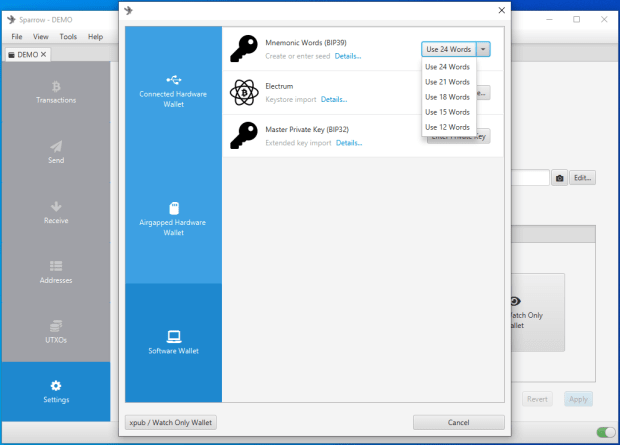
Exploring Ordinals Marketplaces
With the rise of Bitcoin Ordinals, dedicated marketplaces have emerged to facilitate the buying, trading, and creation of Ordinals. One such marketplace is Gamma, which has introduced a trustless Bitcoin Ordinals marketplace. Gamma aims to provide a remarkable Web3-native experience by combining an open marketplace, creator tools, and integrations with secure third-party wallet extensions. On Gamma, users can not only engage in buying and trading Ordinals but also create their own inscriptions.

Another noteworthy marketplace is Magic Eden, which has recently launched its Bitcoin NFT Marketplace. This platform offers a space for users to discover, buy, and sell Bitcoin Ordinals and other NFTs. Magic Eden provides a user-friendly interface and a seamless trading experience, attracting enthusiasts looking to engage with the growing Ordinals ecosystem.

Final Thoughts
As the popularity of Bitcoin Ordinals continues to surge, wallets and marketplaces are stepping up to cater to the demand for storing, trading, and creating Ordinals. Wallets like Ordinals Wallet, Xverse, Hiro Wallet, and customizable options like Sparrow offer users convenient solutions for managing their Ordinals. Meanwhile, marketplaces such as Gamma and Magic Eden provide platforms for buying, selling, and exploring the vibrant world of Bitcoin Ordinals and NFTs. With further developments on the horizon, the Bitcoin Ordinals ecosystem is poised to expand, offering exciting opportunities for users in the evolving Web3 landscape.
Bitcoin
French Police Arrest Crypto Kidnappers After Finger Cutting

Paris, France – French police arrested several suspects this week tied to a disturbing May kidnapping. The victim was the elderly father of a wealthy cryptocurrency entrepreneur. A source close to the investigation confirmed the arrests on Wednesday.
This incident is the latest in a concerning series of crimes. Over recent months, criminals have repeatedly targeted the families of France’s crypto elite. The goal appears consistent: extortion through abduction.
The May Kidnapping: Violence in Daylight
The events prompting these arrests unfolded on May 1st. In Paris’s busy 14th arrondissement, four masked men struck in broad daylight. They seized the elderly father of a prominent crypto businessman. Witnesses saw the men force the victim into a delivery van.
The kidnappers acted brutally. They cut off one of the victim’s fingers. They demanded a ransom of several million euros (equivalent to millions of dollars) for his release.
French police responded decisively. A tactical unit located where the man was being held. Days after the kidnapping, they stormed a house in a Paris suburb. They successfully freed the victim.
Recent Arrests and a Pattern of Crime
The arrests made this Tuesday target individuals suspected of direct involvement in this violent abduction and extortion plot. The source did not specify the exact number of people arrested or their locations. Under French law, suspects can be held for questioning for up to 96 hours before charges must be filed.
This case isn’t isolated. Since January, French authorities have tracked a worrying trend. Wealthy individuals involved in cryptocurrencies, and crucially, their families, have become prime targets for kidnapping gangs.
The Balland Case: A Chilling Precedent
The spate began dramatically in January. Kidnappers abducted David Balland, co-founder of the billion-dollar crypto security firm Ledger, and his partner. The perpetrators used horrific tactics similar to the May case. They cut off Balland’s finger and demanded a large ransom.
Police found Balland the next day. His girlfriend was discovered tied up in the trunk of a car outside Paris. This case highlighted the serious threat facing the crypto community.
Significant progress was made last week. Moroccan authorities, acting on French requests, arrested Badiss Mohamed Amide Bajjou in Tangier. The 24-year-old is suspected of being the mastermind behind the Balland kidnapping and other similar attacks. At least nine other suspects are under investigation in that specific case.
“Stop the Mexicanisation”: Fear and Frustration Mount
The repeated attacks have created deep anxiety. Wealth generated through the volatile but lucrative cryptocurrency market has painted targets on the backs of entrepreneurs and their loved ones. The violence and brazen tactics recall organized crime operations seen elsewhere.
One prominent crypto entrepreneur voiced this fear starkly. He urged French authorities to “stop the Mexicanisation of France.” This phrase directly references the kidnappings often perpetrated by violent cartels in Mexico.
Government Steps: Meetings and Security Pledges
The growing crisis forced a government response. Last month, Interior Minister Bruno Retailleau held an emergency meeting. He met with leaders from the cryptocurrency sector. The Ministry of the Interior announced plans following this meeting. They pledged to bolster security measures specifically for individuals deemed high-risk within the crypto industry.
The Security Challenge for Crypto Wealth
This wave of kidnappings underscores a harsh reality. Sudden, significant wealth linked to cryptocurrencies attracts dangerous criminal attention. Unlike traditional wealth often held in regulated banks or visible assets, crypto fortunes can be harder to trace. This might make victims seem like easier targets for extortion, criminals mistakenly believing crypto ransoms are harder to track or recover.
However, the brutal methods – severing fingers to pressure families – demonstrate extreme violence. It shows these gangs operate with little regard for human life. The targeting of elderly parents adds another layer of cruelty, exploiting family bonds for financial gain.
The Investigation Continues
While this week’s arrests mark progress in the May case, the broader threat remains. Authorities are actively investigating the connections between these incidents. They are working to dismantle the networks responsible for planning and executing these kidnappings.
Key questions persist:
- Are these separate criminal groups, or part of a larger, coordinated network?
- How are victims being identified and targeted?
- What specific security enhancements will the government implement?
The French crypto community watches nervously. They hope these arrests signal a turning point. They want authorities to break the cycle of violence targeting them and their families. The pressure is on police and government officials to deliver tangible results and restore a sense of safety.
The promise of cryptocurrency innovation now comes with a grim caveat in France: immense wealth can carry immense personal risk. As investigations deepen and security measures evolve, the nation grapples with preventing its crypto boom from being overshadowed by a crime wave targeting its architects.
Bitcoin
Telecom Giant Vodafone Bringing Crypto to the Masses Via SIM Cards
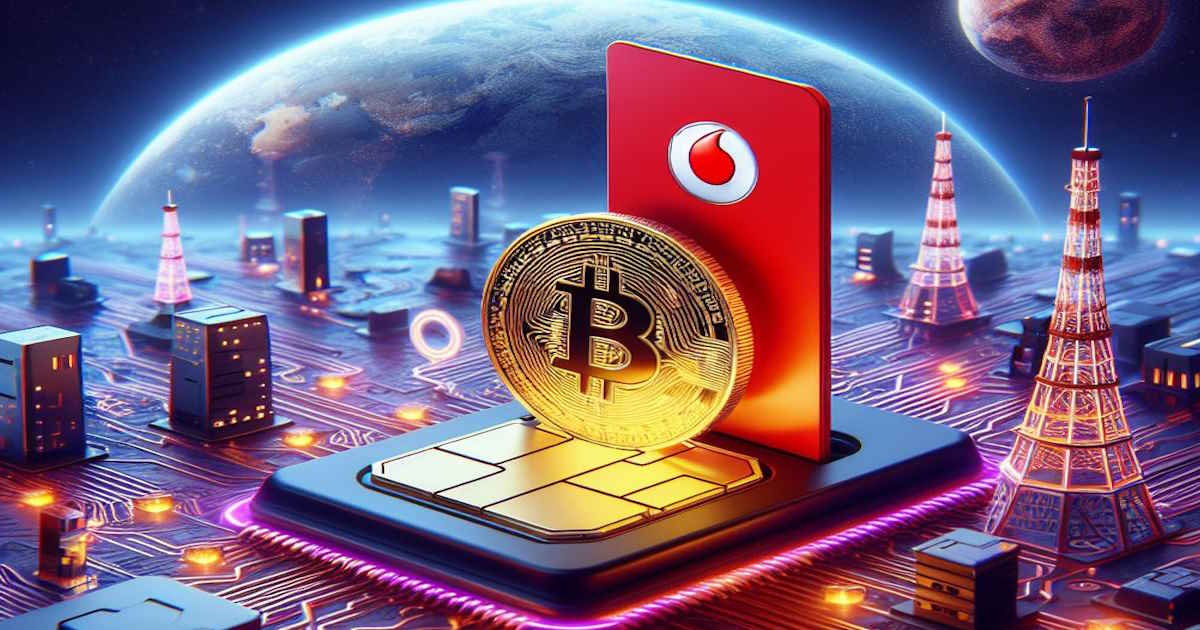
The major telecom company Vodafone has unveiled an ambitious plan to integrate cryptocurrency wallets directly into the SIM cards used by mobile phones on its network. This cutting-edge move aims to make blockchain technology and crypto easily accessible to millions of smartphone users worldwide.
What’s Happening?
Vodafone, one of the largest mobile operators based in the UK, intends to combine crypto wallets with the subscriber identity module (SIM) cards inside phones. SIM cards are little chips that allow mobile devices to connect to a carrier’s network.
By embedding a crypto wallet into these ubiquitous SIM cards, Vodafone wants to introduce blockchain and virtual currency technology to the masses through the smartphones we all use daily.
The Bigger Blockchain Picture
This crypto SIM integration is part of Vodafone’s bigger blockchain strategy. The company has developed its own “PairPoint Digital Asset Broker” platform to enable secure digital identities and transactions across different blockchains.
Vodafone’s blockchain lead David Palmer emphasized in an interview that mobile phones are the main way billions access digital services and commerce. So partnering blockchain with SIM card tech is crucial for widespread adoption.
By 2023, there will be over 8 billion mobile phones in use globally. And estimates suggest crypto wallets on smartphones could reach 5.6 billion by 2030 as digital money goes mainstream.
Financial Restructuring
The crypto wallet announcement comes as Vodafone seeks to restructure its finances and raise billions in new funds through debt offerings and loans over the next couple years.
The company plans to take on $2.9 billion in total debt, including $1.8 billion in direct loans. Some of this financial overhaul relates to issues at Vodafone’s Indian subsidiary Vodafone Idea Ltd.
While navigating these monetary hurdles, Vodafone still sees major opportunities in emerging technologies like blockchain and aims to be an innovator helping drive mainstream crypto adoption through the SIM card strategy.
Bitcoin
No Evidence of Hack, Says Bitfinex CTO Amid Ransomware Gang’s Allegations

In the world of cybersecurity, claims of data breaches can cause significant concern and speculation. Recently, a ransomware group named FSOCIETY claimed to have successfully hacked several organizations, including the cryptocurrency exchange Bitfinex. However, Bitfinex’s Chief Technology Officer (CTO), Paolo Ardoino, has dismissed these rumors, stating that a thorough analysis of their systems revealed no evidence of a breach.
According to Ardoino, who is also the CEO of Tether, less than 25% of the email addresses allegedly stolen from Bitfinex’s servers match legitimate users. This casts doubt on the validity of FSOCIETY’s claims regarding the supposed hack.
The ransomware group, styled after the fictional hacking group from the TV show “Mr. Robot,” claimed to have breached several victims, including Rutgers University, consulting firm SBC Global, and a cryptocurrency exchange they referred to as “Coinmoma,” which is likely a misspelling of Coinmama.
Ardoino expressed skepticism about the group’s claims, stating that if they had indeed hacked Bitfinex, they would have demanded a ransom through the exchange’s bug bounty program, customer support channels, emails, or social media accounts. However, Bitfinex received no such requests from FSOCIETY.
Furthermore, Ardoino shared a message from a security researcher suggesting that the real motivation behind the alleged hacks might be to promote FSOCIETY’s ransomware tools, which they reportedly sell access to in exchange for a subscription fee and a commission on stolen profits. Ardoino questioned the group’s need to sell their tools for $299 if they had truly hacked a major exchange like Bitfinex.
It’s worth noting that Bitfinex has previously fallen victim to a significant hack in 2016, resulting in the theft of a substantial amount of Bitcoin. Two individuals, including crypto rapper ‘Razzlekhan,’ pleaded guilty to money laundering charges in connection with that incident.
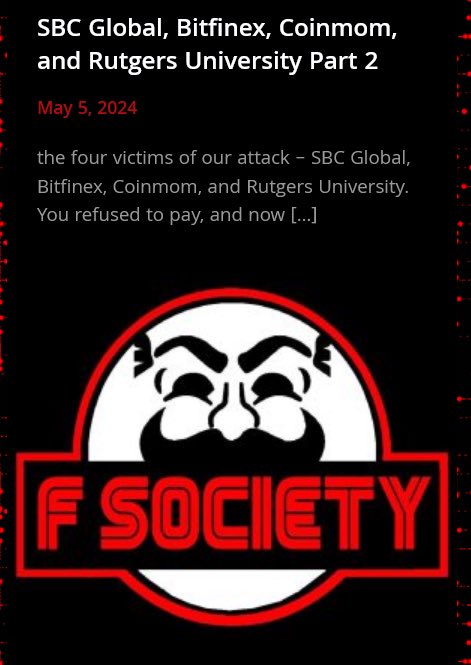
While the claims made by FSOCIETY have yet to be verified by the alleged victims, Bitfinex’s CTO remains firm in his stance that no breach has occurred. As cybersecurity threats continue to evolve, it is crucial for organizations to remain vigilant and take proactive measures to protect their systems and users’ data.
-

 Altcoins5 years ago
Altcoins5 years agoProject Review: Pi Network, a New Scam Project in Town
-

 Bitcoin4 years ago
Bitcoin4 years agoBitcoin Worth $1.2M Seized From Arrested Indian Hacker
-

 Altcoins6 years ago
Altcoins6 years agoReview: Play Arcade Games Inside ARK Wallet And Win Some Free Cryptocurrency
-
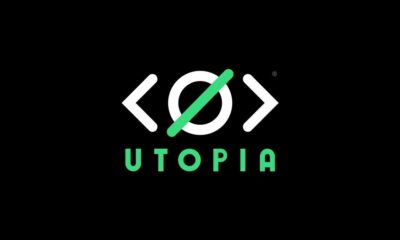
 Blockchain6 years ago
Blockchain6 years agoA Full Review: Utopia A New Decentralized P2P Blockchain
-

 Bitcoin6 years ago
Bitcoin6 years agoAnother Exit Scam: NovaChain Shuts Down
-

 Exchanges6 years ago
Exchanges6 years agoCrex24 Will Require KYC Verification
-

 Bitcoin6 years ago
Bitcoin6 years agoJohn McAfee Has Gone Missing
-

 Blockchain6 years ago
Blockchain6 years agoProject Review: Dmail Decentralized Blockchain Email


